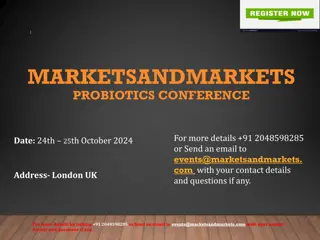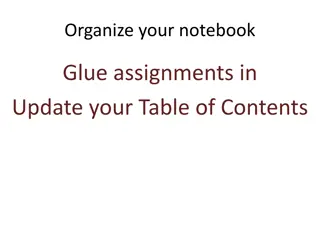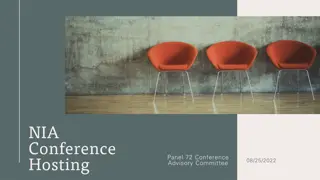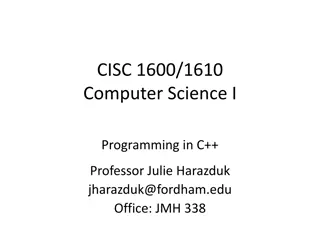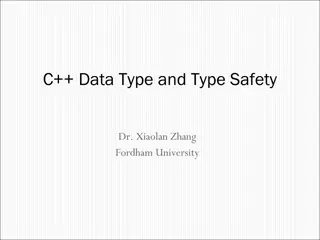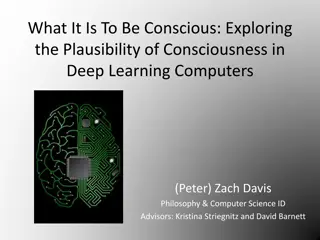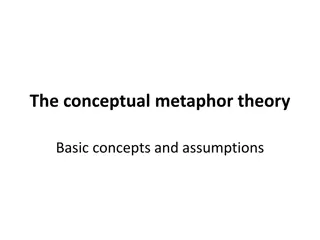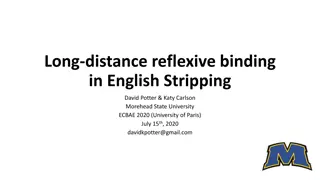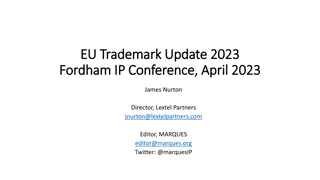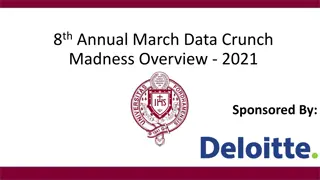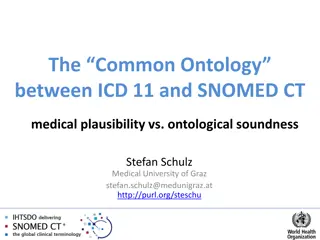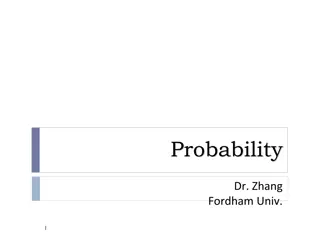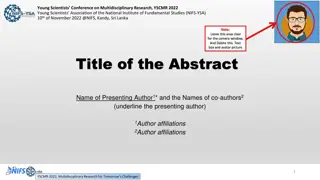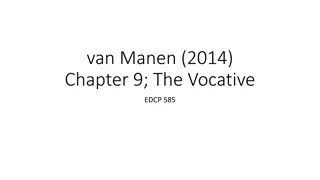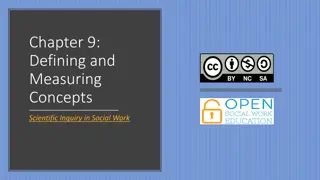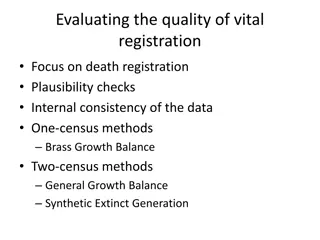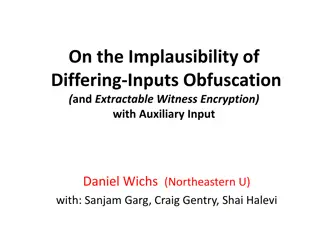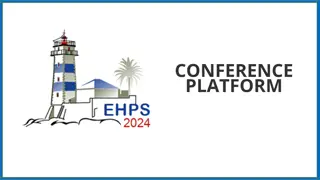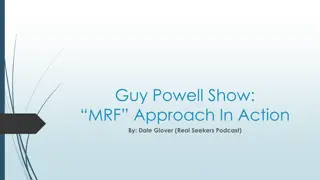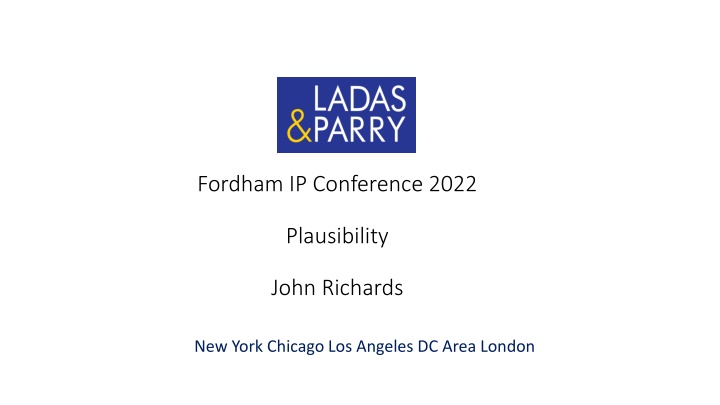
Plausibility vs. Reasonable Predictability in Patent Law Analysis
Explore the key issues surrounding plausibility and reasonable predictability in patent law, delving into cases, references, and implications for inventive step analysis within the EPO. Understand how these concepts shape the evaluation of inventive solutions and the sufficiency of disclosure for patent applications.
Download Presentation

Please find below an Image/Link to download the presentation.
The content on the website is provided AS IS for your information and personal use only. It may not be sold, licensed, or shared on other websites without obtaining consent from the author. If you encounter any issues during the download, it is possible that the publisher has removed the file from their server.
You are allowed to download the files provided on this website for personal or commercial use, subject to the condition that they are used lawfully. All files are the property of their respective owners.
The content on the website is provided AS IS for your information and personal use only. It may not be sold, licensed, or shared on other websites without obtaining consent from the author.
E N D
Presentation Transcript
Fordham IP Conference 2022 Plausibility John Richards New York Chicago Los Angeles DC Area London
Plausibility v. Reasonable Predictability Having re-read Fibrogen v. Akebia discussed by Brian Cordery and noting Birrs LJ s adoption of Floyd LJ s suggestion that what we should be talking about is reasonable predictability rather than plausibility , and noting the rejection of the plausibility concept by Bryson J in Rasmusson v. SmithKline Beecham Corp., I did consider changing the title of this presentation, but did not, because plausibility is the term used in the referral to the Enlarged Board of the EPO in the case that germinated this paper.
How Plausibility came to be an issue in Inventive Step Analysis In the EPO the requirement that the claimed invention must possess an inventive step is addressed by identifying the objective technical problem to be solved after considering the closest prior art and determining whether the claimed solution to the problem was obvious and actually provided as solution to the problem across the breadth of the claim. Some case law has read this as leading to a consideration of whether there is enough evidence in the application to make it at least plausible that a solution was found to the problem which was purportedly solved.
EPO CASE G2/21 Following a reference to it by Appeal Board 3.3.02 in case T0116/18, the EPO Enlarged Board of Appeal is to consider when evidence to support patentability can be submitted after filing a patent application, thereby implicitly raising the question how much information needs to be included in the application to satisfy the requirement that the specification discloses an invention rather than a guess.
Issues raised in the Referral In its referral to the Enlarged Board the decision in T0116/18 identified three lines of cases relating to the question of plausibility in consideration of Articles 56 EPC (requirement for inventive step) and 83 EPC (requirement for sufficiency of disclosure). There were: Cases requiring ab initio plausibility such as T 1239/04 and the majority in he UK Supreme Court in Generics (UK) v. Warner- Lambert; Cases requiring no ab initio implausibility such as T 488/16; and Cases seeing the plausibility issue as irrelevant to consideration of inventive step such as T 31/18.
The Enlarged Board is effectively asked to decide between these approaches.
Position in the United States Traditionally looked at as a question of whether the specification discloses a credible utility. In re Marzocchi (CCPA,1971) By 2010, in Ariad v. Eli Lilly the Federal Circuit had turned to the written description requirement to address the issue noting: Patents are not awarded for academic theories, no matter how groundbreaking or necessary to the later patentable inventions of others. Requiring a written description of the invention limits patent protection to those who actually perform the difficult work of invention. That research hypotheses do not qualify for patent protection possibly results in some loss of incentive But claims to research plans also impose costs on downstream research, discouraging later invention.
In re 318 Patent Litigation 92 USPQ2d 1385 (Fed. Cir. 2009) it was held that in the absence of experimental data in the specification and the absence of evidence that one skilled in the art would be able to infer from the specification the likelihood that the invention would achieve the stated utility claims to a method of treating Alzheimer s disease lacked an enabling disclosure of utility, notwithstanding the commercial success of the treatment and the fact that the specification contained enabling disclosure as to how to put the invention into practice.
The United States has therefore effectively moved from a Not implausible standard to one requiring reasonable predictability of utility.
This trend continued. In In BASF Plant Science LP v. Commonwealth Scientific and Research Organisation (Fed. Cir, 2022) the Federal Circuit sua sponte found claims to recombinant plant cells in general containing polynucleotides coding for particular enzymes lacked an adequate written description, whereas claims to canola (rapeseed) cells containing the same polynucleotides were found to have an adequate written description. The court noted: T]he specification must describe an invention understandable to that skilled artisan and show that the inventor actually invented the invention claimed. Ariad, 598 F.3d at 1351. Actual reduction to practice is not a requirement. . Ascertaining the required possession starts with an accurate understanding of the claimed invention, Amgen Inc. v. Sanofi, 872 F.3d 1367, 1373 (Fed. Cir. 2017), and proceeds to an objective inquiry into the four corners of the specification, Ariad, 598 F.3d at 1351. [A] patentee may rely on information that is well- known in the art to the extent it informs how a relevant artisan would reasonably understand what is actually described in the specification. Evidence showed that the efficacy of the polynuceotides in cells that were similar to canola and expert testimony had said that similar results would be expected in canola cells. There was no such evidence for other types of plant cells
Enablement Rasmusson v. SmithKline Beecham Corp. (Fed. Cir. 2005). The latter case the court held that substantial evidence existed to support a finding that a claim was not entitled to the filing date of an earlier application where the claim was to a method of treating prostatic carcinoma and at the time of filing the earlier application one skilled in the art would not have regarded the claimed effect as credible, whereas by the time of filing of a later application it was credible. Hence the claim was entitled only to the later date. The situation would have been different had the earlier application contained experimental evidence to support the claim to this utility. The court commented if mere plausibility were the test of enablement under section 112, applicants could obtain patent rights to inventions consisting of little more than respectable guesses as to their likelihood of success. When one of those guesses later proves to be true, the inventor would be rewarded the spoils instead of the party who demonstrated that the method actually worked .
Issues 1. major jurisdictions because this can affect not only drafting but also optimal filing date for applications in different jurisdictions. 2. Need to make sure that small pharma is not presented with excessive requirements before it can obtain patent protection. 3. Need for consistency between the requirements for inventive step, utility, industrial applicability, sufficiency, written description and enablement. 4. How do we deal with situations where an invention works, but for reasons that are different from those explained in the application? 5. To whom must efficacy be plausible or reasonably predictable ? A skilled worker or a machine using AI? 6. Do we need to try to balance the rights between first step inventors and follow on inventors who use that first step to produce a commercial product. Need to avoid major differences in specification requirements between
John Richards Of Counsel Ladas & Parry LLP T 212.708.1915 jrichards@ladas.com

